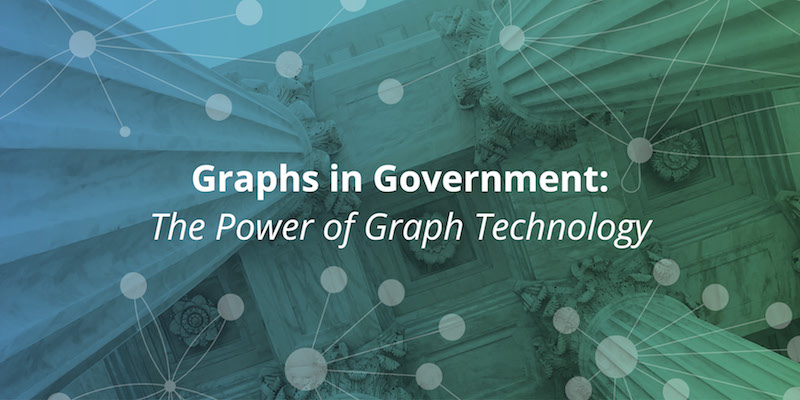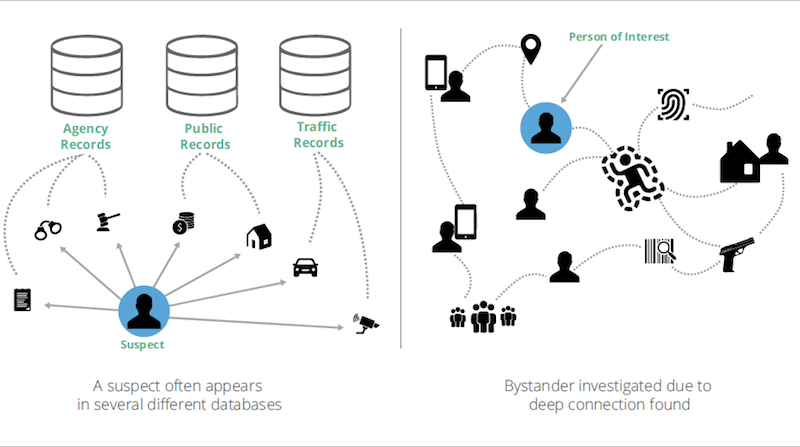Graphs in Government: The Power of Graph Technology

Federal Account Manager, Neo4j
4 min read

The use cases for a graph database in government are endless.
Graphs are versatile and dynamic. They are the key to solving the challenges you face in fulfilling your mission.
Using real-world government use cases, this blog series explains how graphs solve a broad range of complex problems that can’t be solved in any other way.
Last week we gave an overview of this series, such as how storing data in a graph offers benefits at scale, for everything from the massive graph used by the U.S. Army for managing strategic assets to recalling NASA’s lessons learned over the past 50 years.
This week we will show how Neo4j enables government agencies and organizations to perform deep and complex queries, reduce infrastructure costs, maximize value from existing resources, deliver immediate answers at scale and meet security demands.
Perform Deep, Complex Queries
Governments today are challenged with solving complex problems. With the vast amount of data they have pouring in, the answers exist somewhere – but only if you can make sense of the growing volume, variety and interrelationships of data in disparate sources.
Data becomes more useful once its connectedness is established. Connected data is the representation, usage and persistence of relationships between data elements. Neo4j makes it possible to query relationships across disparate data sources, regardless of the type of data or originating database.
Neo4j connects multiple layers of data – across processes, people, networks and things. Once you’ve connected layers, you gain intelligence downstream and provide a connected view of the data to analytic and operational applications. You also obtain context that allows you to more deeply or better refine the pieces of information you’re collecting. The better your understanding of data connections, the better your downstream insights will be.
Neo4j empowers government agencies and organizations to iterate and expand on current datasets, gaining momentum to execute on bigger and better ideas, and find deeper contextual meaning in the data.
Using graph technology, you can increase the number of hops (the levels of connections) between data without a corresponding increase in compute cost. As a result, you gain higher degrees of context not easily achieved by JOINing three or four tables together in an RDBMS.
Neo4j’s architecture enables these deep, complex queries. The enterprise-grade, native graph database is built from the ground up to traverse data connections at depth, in real time and at scale.
Reduce Infrastructure Costs
Your government agency runs on a lean budget. Any opportunity to reduce infrastructure spending frees up resources to focus on the core mission. A graph database does just that.
It delivers deep, complex queries with less hardware, which means reduced costs. The standard, highly available Neo4j installation is 3-5 servers, versus an RDBMS with a graph layer, which requires about 50 servers for the same scale. With this efficiency, Neo4j also requires fewer licenses, further reducing database costs. Neo4j offers deployment flexibility, with servers on-premises or in the cloud.
Maximize Value from Existing Resources
A rip-and-replace approach is a non-starter for most government technology projects. By connecting data across diverse existing data stores, Neo4j leverages the value of all your existing systems. And when it’s time to replace aging applications, government contractors and agencies find that Neo4j is a cost-effective agile foundation for new initiatives.
Deliver Immediate Answers at Scale
Government agencies and organizations must store massive amounts of data and need answers fast.
Neo4j delivers a 1,000x performance advantage over relational and other NoSQL databases hosting graph engines, reducing response times from minutes to milliseconds for queries of graphs containing billions of connections.
Neo4j traverses any level of data in real-time due to its native graph architecture. RDBMS and other NoSQL databases typically see a significant performance degradation when traversing data beyond three levels of depth.
Meet Security Demands
Neo4j fulfills the stringent security demands of government customers. In addition to meeting Federal Information Security Modernization Act (FISMA) requirements, Neo4j’s advanced security architecture supports attribute-based access control (ABAC) as well as role-based access control (RBAC).
Neo4j is approved to run in a classified environment by many Department of Defense and Intelligence Community agencies. Authority to Operate (AO) has been granted for several applications that are built on Neo4j running on classified networks. Many civilian agencies have Neo4j approved to run on their networks as well.
The Value of Connected Data in Criminal Investigations
Criminal investigations highlight the value of connected data, because connections in data point to potential suspects in a case. A suspect often appears in several different databases. Connecting that data is key for investigators to find out all they can about a suspect through phone records, financial transactions, fingerprints, DNA, court records, associates and more.
Separate data silos of people, objects, locations and events (POLE) aren’t useful if you’re doing a criminal investigation or trying to stop a terrorist attack. You need the relationships that span those data silos and contextualize the activities and associations among suspects.
The idea hinges on who knows who. If Person X has come to the attention of the authorities for whatever reason, who else in Person X’s network might be of interest? This complexity is hard to capture and explore through conventional database technologies like RDBMS. Graph database platforms excel at analyzing connected data.
Conclusion
As we’ve shown, Neo4j enables government agencies and organizations to do many functions, such as perform deep complex queries and reduce infrastructure costs.
Graph databases are as versatile as the government agencies that use them. In the coming weeks, we’ll continue showing the innovative ways government agencies are using graph databases to fulfill their missions.
Witness how leading government agencies are using Neo4j to overcome their toughest challenges with this white paper, Graphs in Government: Fulfilling Your Mission with Neo4j. Click below to get your free copy.









